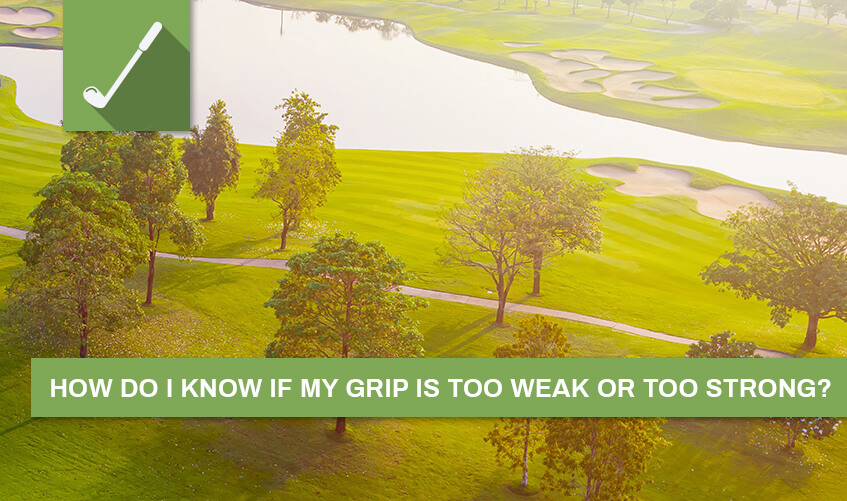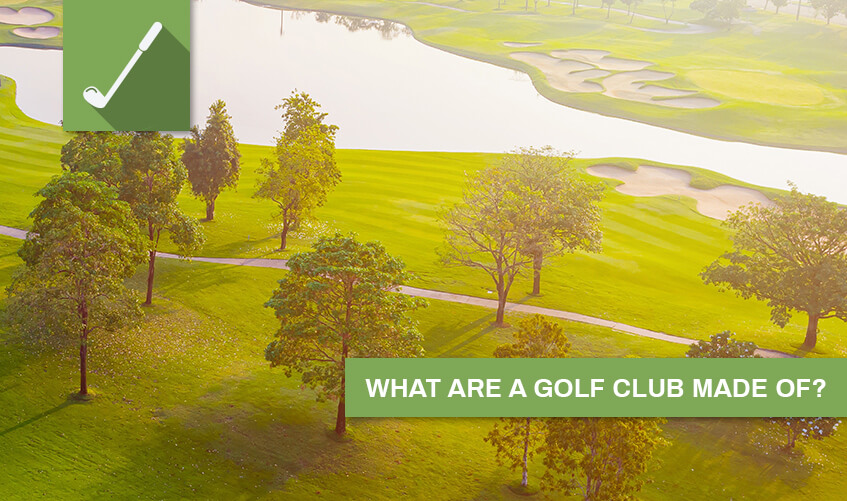What are the Components of a Golf Club?
If you are an avid golfer, you are probably familiar with some of the fundamentals that add up to create a great swing. Most golfers spend the majority of their practice time honing their craft, striving to bring together all of the different elements that make up a flawless stroke.
What many golfers occasionally forget about, however, is the importance of the golf clubs themselves. Just like a perfect swing, many key elements have to come together in a golf club to ensure maximum performance and consistency; otherwise, you’d be playing with merely a lopsided stick.
So what are the integral parts of a golf club, and why are they important for golfers to take note of?
3 Main Golf Club Parts
Just as there are countless variations of a golf swing that are indicative of different player styles, there are just as many golf club parts that can be mixed and matched to produce different results out on the course. Before diving into how these components may vary, let’s go over some club basics, starting from the top.
- Grips. Before you can swing a golf club, you’ve got to be able to hold it. Every model has a grip, and the type of covering that surrounds the tops of your clubs can make all the difference in a good swing.
- Shafts. Connecting the grips with the club head, shafts are the longest part of the club. They’re not just made to close the gap between the player and the ball, either; golf club
shafts can provide players with differing amounts of flexes, from stiff to light. - Heads. The golf club head is precisely where ball meets club. Bulbous heads are indicative of fairway woods and drivers, while thin metal versions denote irons and wedges. The point where the golf club shaft is connected to the golf club head is called the hosel. Golf club heads also have a few noteworthy parts of their own:
- Clubface – The front, grooved portion of the club head, where direct contact with the golf ball is made.
- Sole – The bottom part of the club head that rests on the turf below.
- Toe – The furthest point of the club head from the player when holding the club.
- Heel – The closest point of the club head to the player when holding the club.
- Back – The furthest point on the club head from the face of the club.
Today’s Variations of Golf Club Parts
The basic elements that make up today’s golf clubs haven’t changed since the beginning of the game some five hundred years ago. Three primary components have always existed: A place to hold the club, a shaft, and a head to strike the ball with.
Improvements upon these integral golf club parts, however, have been vast. Let’s check out some key features of today’s high performance golf clubs.
- Hollow metal club heads. Persimmon may have been the wood of choice for the bulbous drivers of the past, but the hollow metal club heads of the modern era outperform their predecessors by leaps and bounds. Not only have the titanium, steel and composite drivers of today drastically reduced club head weight – allowing for faster speeds and powerful swings – but their larger faces also provide golfers with a broader, more forgiving surface.
- Irons for everyone. The first irons to appear on the scene were heavy, imperfect and sometimes unpredictable. Unlike their crude ancestors, most irons available today are flawless products made out of chrome-plated steel, titanium and other composite metals. Two different types of club head compositions make up the modern models: The cavity-back composition supplies an even distribution of weight around the clubface, which
allots more forgiveness across the clubface when striking the ball off-center. These irons are perfect for beginner to intermediate golfers. For the scratch players that can consistently hit the sweet spot on the clubface, a muscleback style is the meatier iron of choice. - The best of both worlds. Ever find yourself in a position where you could use another drive off of a tee, but you’re already on the fairway? Luckily, there’s a club for that. With advances in modern golf technology, manufacturers have produced several lines of hybrid golf clubs that cater to every possible situation that can arise on the golf course. Many versions combine the best parts of the two traditional golf heads – the bulbous driver and the thin-metaled irons – to grant golfers the power of a driver with the efficiency of an iron when making long fairway shots.
- The basic parts of today’s golf clubs have remained relatively the same since their initial conception centuries ago. Advances in modern technology, however, have produced phenomenal new products that have improved upon traditional golf clubs and equipment drastically. Consider checking out some of the new improvements to the aging woods, irons and wedges in your golf bag. You may just find the perfect new update to your favorite old club.



